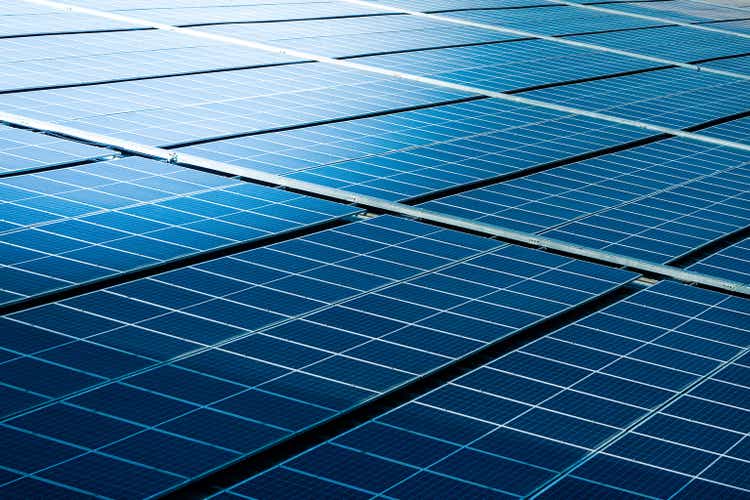
With less than a week to go before the US election, the latest data depicts an economy growing solidly and an inflation rate that continues to subside. America’s real GDP grew 2.8 per cent in the September quarter, driven by strong consumer spending and business investment, while the personal consumption expenditure index (PCE), the Federal Reserve Board’s preferred measure of inflation, rose only 1.
5 per cent. Core PCE, which excludes food and energy, came in at 2.16 per cent.
The state of the economy ought to have given Kamala Harris a strong, positive story to tell during her campaign, but it’s not cutting through. Credit: nnasswain It would appear that the Biden administration, with considerable help from the Fed, has pulled off the rare feat of achieving a soft landing, or taming a bout of very high inflation – the inflation rate peaked at 9.1 per cent in mid-2022 – without plunging the world’s largest economy into recession.
The September quarter produced the 10th consecutive quarter of growth and compares with the below 1 per cent growth being experienced in almost all of the other major developed economies. The US economy has grown faster than other advanced economies for the past two years and is now about 11 per cent larger than it was before the pandemic. That’s about twice the growth rate of Canada’s economy, and more than two and a half times the growth rate of the eurozone’s.
Despite all the evidence that the economy is in very good shape -- unemployment is tracking at historically low levels (4.1 per cent in September), 18 million jobs have been added over the past four years, with growth accelerating, and there has been solid growth in real wages and household incomes relative to pre-pandemic levels -- polls show a majority of Americans think their economy is struggling. The US economy hasn’t been destroyed by the Biden administration, far from it.
America has had easily the best-performing advanced economy of the post-pandemic period. That might be changing. The latest polls do show that consumer confidence rose this month at its fastest rate in more than three and a half years.
In the September quarter, consumer spending rose 3.7 per cent, which doesn’t suggest any fears about the future – but there is no doubt that many Americans’ views about the state of their economy are at odds with its actual performance. That might be because Donald Trump keeps telling them that the Biden administration “has destroyed the American economy” and that it is “the worst economy ever.
” He describes the US as “a failed state.” If you exclude 2020 and the worst of the pandemic, however, the economy grew at an average rate of 2.8 per cent a year during the first three years of Trump’s presidency.
Under Biden, it has grown at an average rate of 3.2 per cent a year. If Trump’s favourite barometer of economic conditions, the stockmarket, is any indicator, Biden has performed far better than Trump.
The S&P has risen 57 per cent during Biden’s term so far against the 43.5 per cent gain during the same period of Trump’s term. The rise and rise of the stock market has been accompanied by a surge in house prices.
There has been a massive increase in household wealth during Biden’s term, albeit some households – those who rent and who don’t have a direct exposure to the sharemarket – haven’t experienced it. Interest rates have been higher under Biden because of the big spike in inflation caused by the pandemic-induced dysfunction in supply chains, the massive doses of stimulus injected into household bank accounts and the broader economy by both the Trump and Biden administrations and the Fed’s response to the surge in prices. They are, however, coming down.
The Fed cut 50 basis points from the federal funds rate last month and signalled the likelihood of further cuts before the end of the year. Financial markets are pricing in another 25 basis point cut when the Fed’s Open Market Committee, which makes rate decisions, meets next Wednesday, the day after the election. The state of the economy ought to have given Kamala Harris a strong, positive story to tell during her campaign.
Whether she hasn’t told it well, or a lot of Americans just haven’t wanted to listen, or simply don’t believe it, Trump retains a lead on voter perceptions of economic management, although it’s narrowing. Should Harris win the election, her policies broadly promise more of the same sorts of policies Biden pursued, with tax hikes for companies and the wealthy paying for increased social spending. She would add significantly to debt and deficits – the latest Committee for a Responsible Federal Budget (CRFB) analysis, issued on Monday, estimates her policies would add $US3.
95 trillion ($6 trillion) to them over the next decade. Trump’s policies, however, would add a whopping $US7.75 trillion over the same period and potentially as much as $US15.
55 trillion. The CRFB’s central estimate of $US 7.75 trillion for the cost of his policies is almost identical to the amount of government debt added during his presidency.
Donald Trump keeps telling voters that the Biden administration “has destroyed the American economy”. Credit: AP While the Democrats’ policy agenda is a fairly familiar mix of higher taxation and spending, Trump’s is radical. His tariffs (the baseline tariff seems to have crept up to 20 per cent while the tariff on imports from China remains, for the moment, at 60 per cent), the detention and deportation of millions of immigrants and big tax cuts for companies and wealthy households would be highly inflationary and regressive, and his determination to have some influence over the Fed would undermine its credibility and its effectiveness in responding to a new outbreak of inflation.
Add to that his planned Government Efficiency Commission, headed by Elon Musk, and the combination of policies might well add up to a policy-induced recession. Musk has said he can cut $US2 trillion from US government spending, or about 30 per cent of last financial year’s total expenditures. He also says cuts of that magnitude would “necessarily involve some temporary hardship.
” That’s an understatement. He’s directionally right. The US does have to get its burgeoning debt (almost $US36 trillion) under control.
That is, however, an objective best pursued incrementally and over the long term, and one that would be made easier if there is economic stability and growth. That’s not what Trump and Musk are promising. Cuts of the scale Musk says he will pursue would possibly produce more stable fiscal settings in the long term, but would inflict a lot more than “some temporary hardship,” particularly for the lower income households who would see their social security and healthcare safety nets gutted.
The US economy hasn’t been destroyed by the Biden administration, far from it. America has had easily the best-performing advanced economy of the post-pandemic period. It’s just that there are many Americans who either don’t know that, or don’t feel it - and they might decide the election for Trump and deliver the US, and the world, a series of seismic economic and geopolitical shocks.
The Business Briefing newsletter delivers major stories, exclusive coverage and expert opinion. Sign up to get it every weekday morning ..













